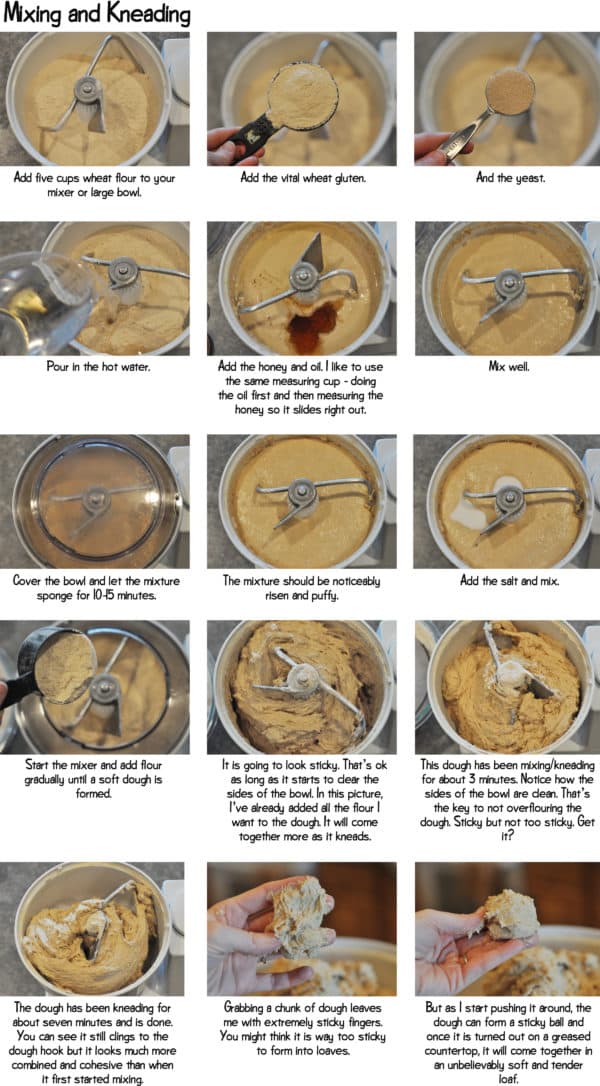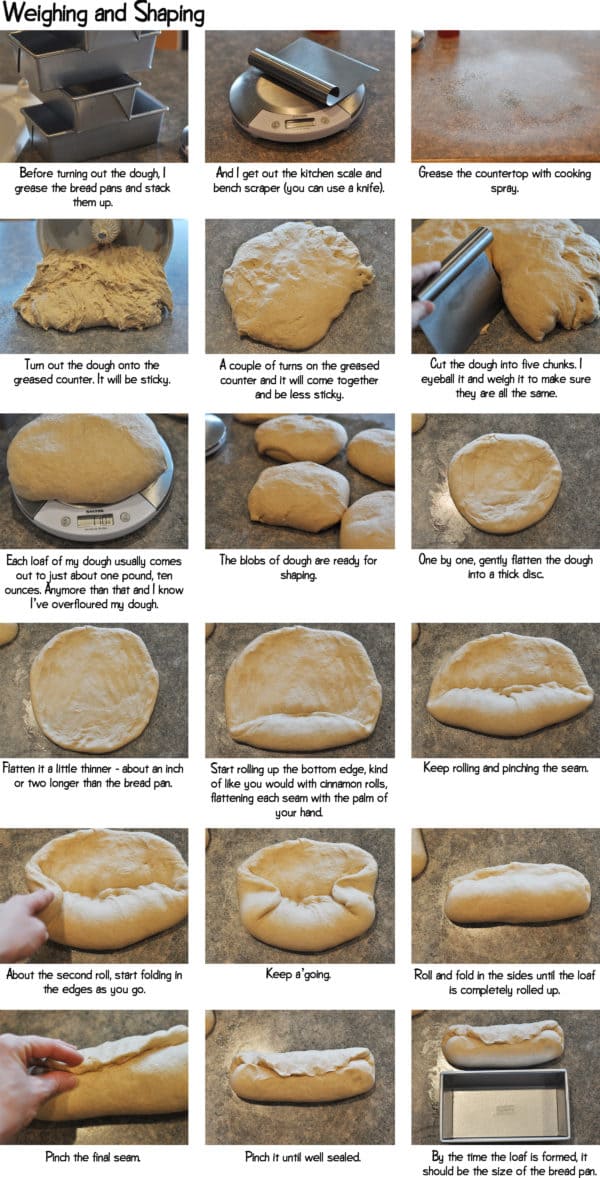Whole Wheat Bread {Step-by-Step}
Check out this step-by-step picture tutorial on simple whole wheat bread making to become a master bread maker in your own home.
I get a lot of questions regarding yeast and baking bread. A lot. It can be tricky to know when to stop adding flour, how long to knead, what yeast to use, etc, especially when you are just starting down the bread making road.
A few years ago, I wrote up a tutorial on yeast which answers many of those questions. However, I have yet to do a step-by-step picture tutorial on simple bread making. Enter today’s post!

Several years ago I transitioned to making all of our bread. Not only has it saved us money but we have come to far prefer the taste of homemade bread to storebought.
Even if you aren’t up to making all of your bread, conquering a loaf of bread for special occasions or an occasional indulgence is surely worth it! And I promise, it isn’t hard. In my carb-centered world, there is nothing more divine than a piece of warm, homemade bread fresh out of the oven slathered with butter.
A few notes:
1) For the purposes of the step-by-step instructions below, I am using Darcy’s Whole Wheat Bread recipe from this whole wheat bread post. That post has several recipes but I almost exclusively use Darcy’s recipe.
2) I have a Bosch mixer which is pictured in the instructions below and which I use to make all of my breads/rolls. You might need to tailor each bread recipe you try to the size of your stand mixer (or the size of the motor in the mixer) or to what you can accomplish by hand. The pictures below are a simple guideline to follow – adapt according to your equipment or lack of.
3) I grind my own wheat flour (with the Wolfgang Grain Mill) when I make bread although you can definitely use storebought wheat flour. I prefer hard white wheat over hard red wheat for it’s delicate texture and flavor but either can be used. Here are a few informative posts I did on wheat (varieties, where to buy) and wheat grinding (different wheat grinders on the market with lots of reviews). When using freshly ground wheat flour, you will need to add more cups of flour than if using flour that has settled in a bag, since the flour is more aerated and fluffy from being freshly ground. That is a minor issue since I harp on the fact that when making yeast doughs the flour amount given in the recipe should be a guideline only – the real test is the look and feel of the dough.
4) Just to restate from an earlier post, I use these bread pans and once the bread is cooled, I package it in these lovely bread bags with the plastic bag clips from IKEA and freeze until we are ready to eat.
5) As always, please let me know if you have any questions! I hope this tutorial is helpful for those of you wanting to conquer the art of bread making.
Click here for a printable PDF version of the picture tutorial.



Update 4/2015: If you have issues with your bread rising pretty well in the pans but deflating a bit in the oven, you might consider changing the way you shape your dough. I’ve included a video below with a quick 2-minute tutorial on how I shape my bread dough these days. I used to do it as pictured in the post above (and I know it works for many of you so I’m leaving the pictures as is) but over the last several months, my bread hasn’t risen well in the oven and I’ve realized it needs a tighter loaf. So I simplified how I shape it by pressing it in my hands into a much tighter loaf. I’ve indicated this in the comments but many of you wanted a visual so here you go. I literally grabbed the video camera in the middle of making bread when I remembered you asked for this – and so please don’t mind the quirky editing and my little sidekick.

LuAnn’s Whole Wheat Bread {With my Adaptations}
Ingredients
- 5 ½ cups warm water
- ½ cup sugar
- ½ cup oil
- 2 tablespoons instant yeast
- 2 tablespoons salt
- 2 tablespoons vital wheat gluten
- 2 tablespoons nonfat dry milk
- 2 cups (284 g) white flour
- 8-10 cups (1136 to 1420 g) whole wheat flour
Instructions
- Lightly spray bread pans with cooking spray and set aside.
- Mix the water, sugar, oil, yeast, salt, gluten and dry milk together in the bowl of an electric mixer or by hand. Add the white flour and mix well.
- Continue adding the whole wheat flour until the dough cleans the sides of the bowl and the dough is soft but not overly sticky.
- Knead for 10 minutes until a soft, smooth dough has formed. Using oil or cooking spray to grease your hands and countertops, form the dough into 4 loaves.
- Place the loaves into the bread pans and cover with lightly greased plastic wrap. Let them rise until the dough has risen about 1 1/2 inches above the top of the bread pan.
- Place the bread pans carefully in a cold oven. Turn the oven on to 350 degrees and bake for 38 minutes.
- Remove from the oven and turn out the bread onto a wire rack. Let cool completely before placing in bags to put in the freezer.
